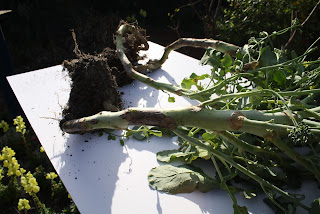| Florida Green Roof and Living Wall plant, Seminole Pumpkin (Permaculture Food) |
An adapted garden wonder to Florida, the Caribbean and Latin American, this variety of pumpkin or squash is acclimated to the harsh, humid climate of the region.
| Unripe Seminole Pumpkin, resistant to pests |
A fast grower who provides ample shade, Seminole Pumpkin makes a great end of summer living wall and green roof plant.
| Florida Living Wall plant, Cucurbita moschata |
Thriving on neglect and drought, Cucurbita moschata, is ultra resilient to squash vine borers and other pests. Here she is used as a cover to our geese pen, providing a wall of privacy, security, shade and food.
 |
| Seminole Pumpkin creates a living wall and green roof for the Urban Farm fowl |
| Seminole Pumpkin is a heavy food producing plant |
Nature has provided us with some awesome food plants who will thrive well in the permaculture garden and on the hot roofs and walls.





